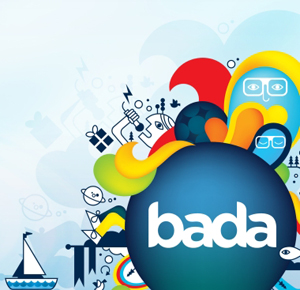No Qt for S40, Maemo and Symbian apps won’t be compatible: is Nokia really willing to unify development for OVI Appstore?
Thomas Menguy | January 4, 2010Despite all what can be read everywhere, Nokia is still an incredible company:
- They have a formidable supply chain (and you have when you are selling arounf half a billions phones a year)
- They are the only phone brand who is making money from emerging countries
- They have an incredible story of reinventing themselves from paper factory to wheel, TV set, phones and network equipments, now why not services?
For me they have everything in hand to succeed and stay the undisputed leader. Even if lately Nokia has been under fire, with its first loss in ten years, they are actively pursuing new ways to recover
- Services startegy, with a lot of acquisitions around OVI (Dopplr, Plazes, Navteq, Trolltech, Symbian, Plum, cellity, etc. See this url for a full list: Nokia acquisitions)
- Hardware differentiation: netbook (nokia booklet 3G) and widening Intel cooperation (check my article around this here)
- Software consolidation to allow common deployment accross the 3 Nokia’s device software platforms: S40 for low-end phones, Symbian new S60, called Symbian^4 and the next Maemo 6
The last point was, for me, the best way to make OVI appstore a success, to allow developers to target hundreds of millions of phones, then billions in few years … and Nokia didn’t and won’t, for now, deliver it, here is why:
The first part is in this “Nokia Software Strategy WhitePaper” from December this year (2009), found at Nokia Hosted Presentations :
The following graphic speaks for itself:

S40 development will be limited to java:
- no Web runtime, so no webkit, but we are talking here of low cost phones, low data throughput, low CPU, low RAM so this is not a big surprise (WebKit is not exactly an embedded browser)
- NO QT! j2me is here for a while…
This is pretty clear : Nokia didn’t manage/want to open-up S40 with an externalizable SDK, and this is a big surprise! For the little story OpenPlug has made it for the very very low cost SonyEricsson J132, just to say that it is possible.
So what happened? Political internal war? Lack of vision? Lack of resources? I bet on the first one, Nokia is such a big company that refocusing and putting energy in a single direction is really difficult.
It doesn’t stop here : Nokia is developing two incompatible UI frameworks on top of Qt, one for Maemo 6 and one for Symbian^4. So, as a corollary, there is NO chance that a Maemo application will be Symbian^4 compatible without a complete rewrite of the presentation layer, bad news for the developers.
To have all the details, check this thread and this thoughtful post: Maemo 6 loosing source compatibility with plain Qt, and Symbian^4, to sum it up, here is what happened:
- Qt is an “old generation” UI framework with WinXP like normal widgets, no animation, no fanciness
- A QGraphicsView has been added to allow the creation of animated and fancy widget, like the iPhone ones for example
- BUT : no standard widgets has been created on top of it
- The Nokia Memo team has created its own set of new generation widgets called Maemo Direct UI (Maemo DUI)
- …and the Symbian team also! for Orbit now called 4 Symbian^4 UI framework.
So here we are, to add a simple button, a list or a table or any UI building blocks, a developper will have to use different APIs to do the same thing, once for Maemo, the other for Symbian, aleviating nearly all the Qt advantages and promises for UI commonality.
What I believe the Symbian and Maemo teams in Nokia need to do now is get together and fix this before it’s too late
And I can’t agree more…they have to fix it before releasing it to the wild.
Again political fights, point of views, and over engineering seem to be the root cause of this non-sense, but perhaps also the Nokia DNA : Nokia is building products, not platforms (if the S60 licensing failure and application development nightmare is any indication of it…), and this is an area where they really need to reinvent themselves if they are serious about their services strategy.
Of course OVI appstore won’t fall apart because of this Maemo/Symbian split, but it will bring more hurdles to application developers, so less applications, and less innovation to the Nokia platform. S40 remaining closed is a much higher subject of concern, as it really looks like a missed opportunity. For the first time I do think that Samsung with Bada (check my article here) has a more pragmatic and comprehensive platform software strategy than Nokia (times are changing…).
Any comments?
 Recently Samsung announced
Recently Samsung announced 




